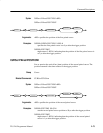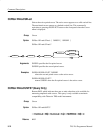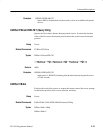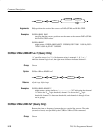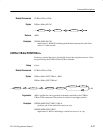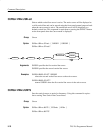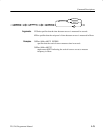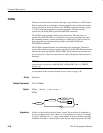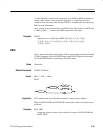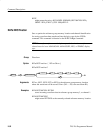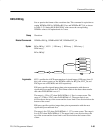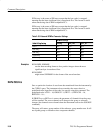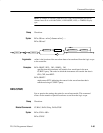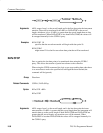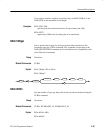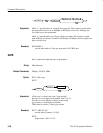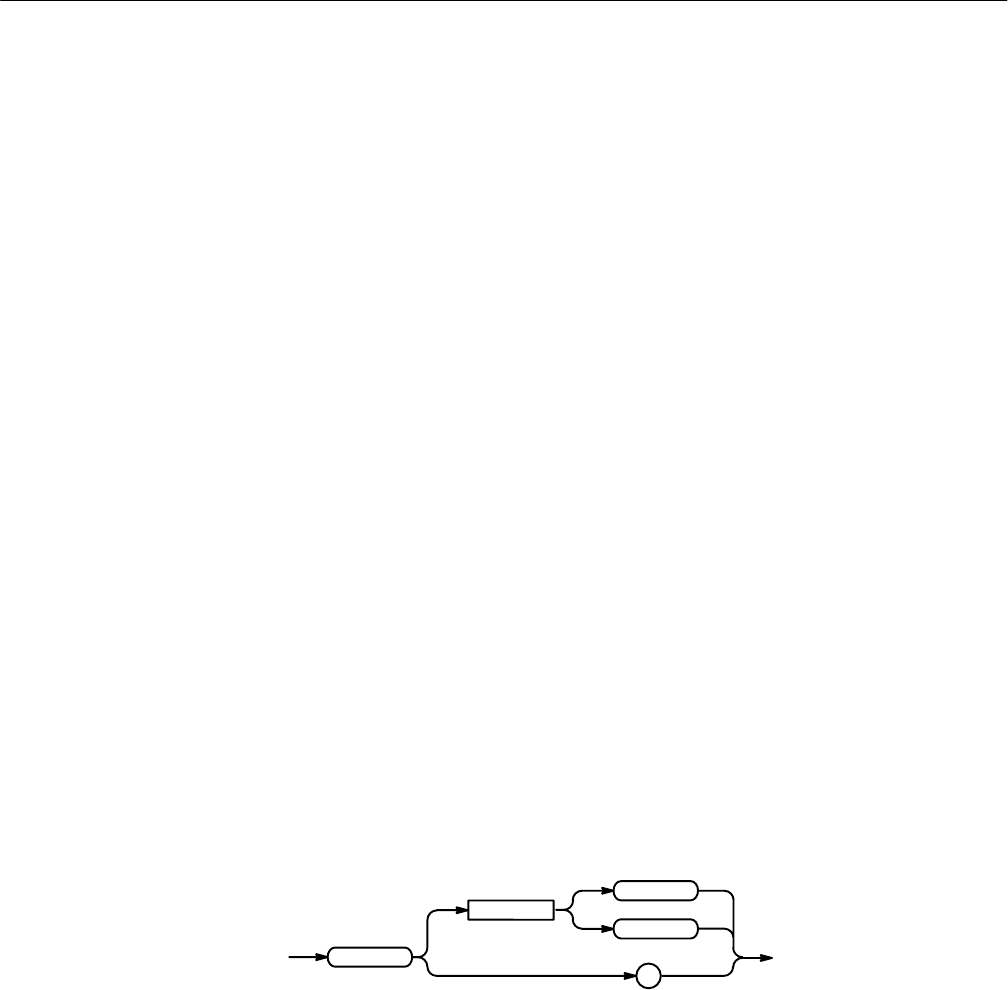
Command Descriptions
TLS 216 Programmer Manual
2–81
is 2 then all bytes on the bus are 2-byte pairs. Use the DATa:WIDth command to
set the width. <data> is the curve data. <newline> is a single byte new line
character at the end of the data. See the GETGRP.C example in the accompanying
disk for more information.
<asc curve> is the waveform data in ASCII format. The format for ASCII data
is <NR1>[,<NR1>...] where each <NR1> represents a data point.
CURVE?
might return, for ASCII data: CURVE 0,0,0,0,-1,1,0,-1,0,0,
-1,0,0,-1,0,-1,-1,1,0,0,0,-1,0,0,-1,0,1,1,0,-1,0,0,
-1,0,0,-1,0,0.
DATa
Sets or queries the format and location of the waveform data transferred with the
CURVe command. Since DATa:DESTination and DATa:TARget are equivalent,
only DATa:DESTination is returned by the DATa? query.
Waveform
CURVE, WAVFrm
DATa { INIT | SNAp }
DATa?
DATa
<Space>
?
INIT
SNAp
INIT initializes the waveform data parameters to their factory defaults.
SNAp sets DATa:STARt and DATa:STOP to match the current vertical bar cursor
positions.
DATA SNAP
assigns the current position of the vertical bar cursors to DATA:STARt and
DATA:STOP.
Examples
Group
Related Commands
Syntax
Arguments
Examples



